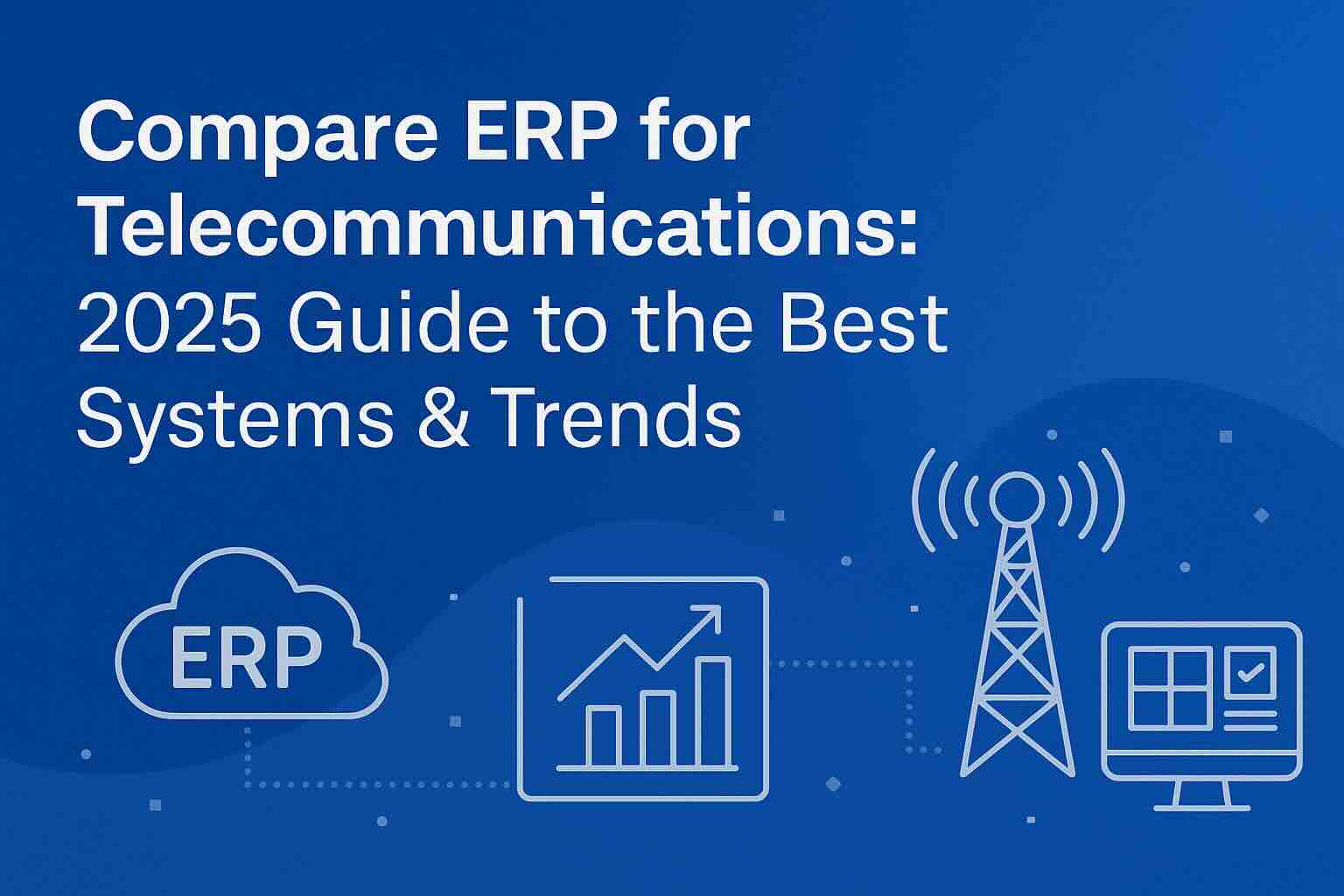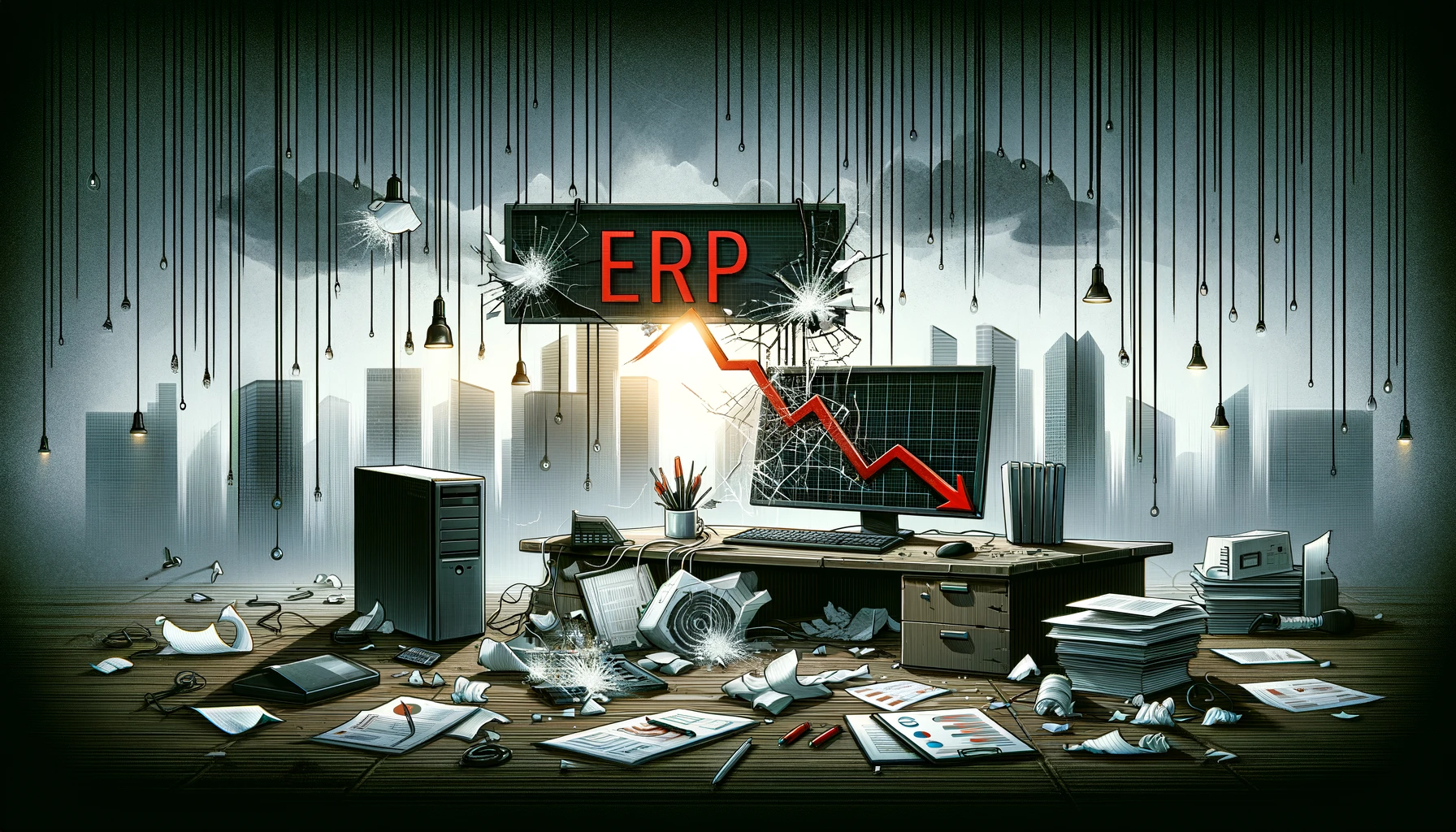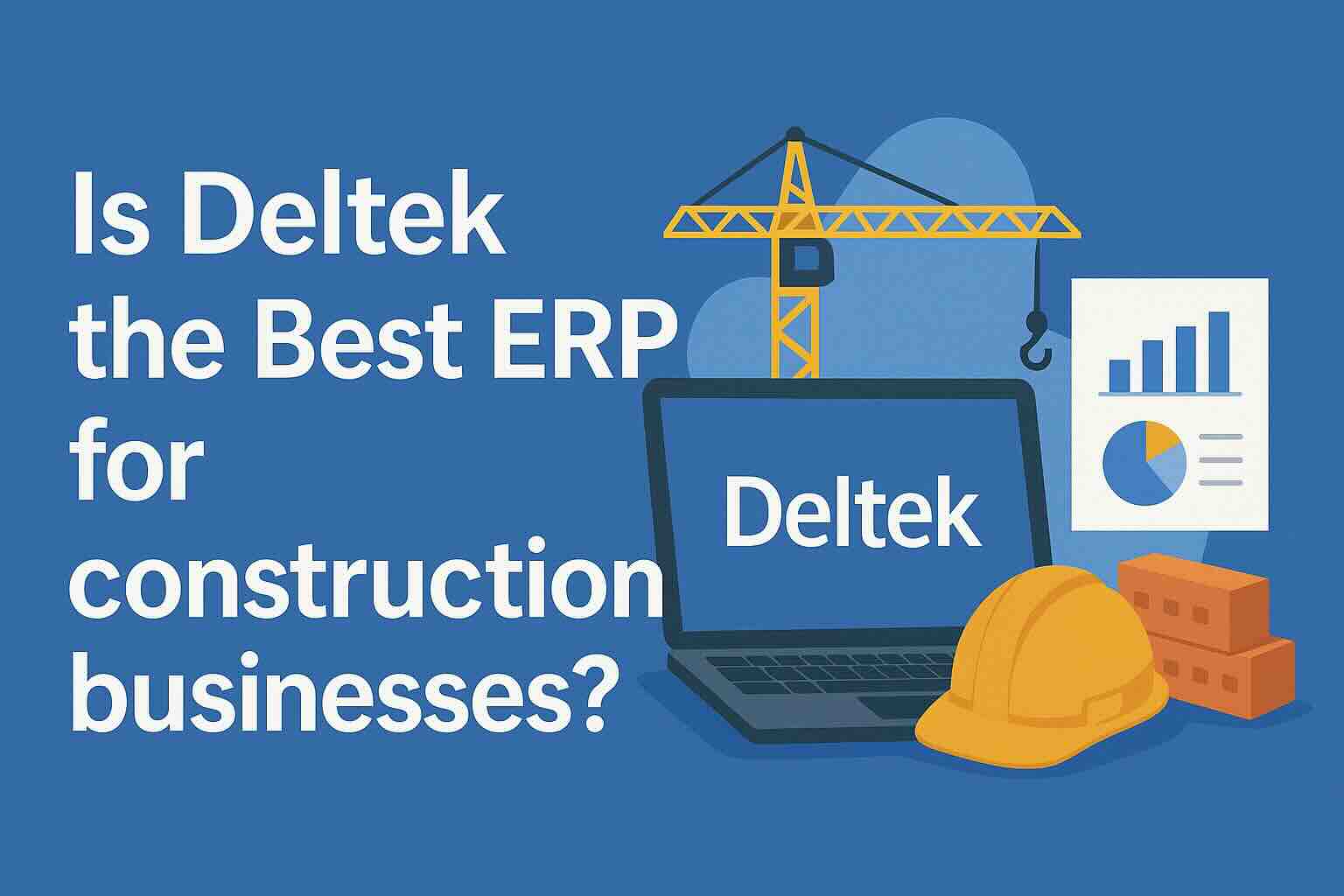Compare ERP for Telecommunications: The 2025 Guide to Leading Systems

Introduction
In 2025, telecommunications companies are under immense pressure: 5G and 6G rollouts, edge computing, regulatory and privacy demands, complex subscription bundles, AI-driven analytics, and shrinking margins. Selecting the right enterprise resource planning system (ERP) is no longer just about finance or CRM – it’s about agility, cloud-native architecture, real-time data flows, embedded analytics, and strong OSS/BSS integration.
This guide will help you compare ERP for telecommunications by breaking down the leading vendors, their strengths and weaknesses, and the trends that should shape your decision.
SAP S/4HANA
SAP’s flagship ERP remains a powerhouse for large, complex, global telcos. In 2025 the “RISE with SAP” and S/4HANA Cloud initiatives deliver greater agility and SaaS-like features, while embedded AI (“Joule”) powers predictive analytics for forecasting and cost optimisation. This makes it attractive for national or multinational telcos with complex regulatory, network, and product portfolios.
However, cost and complexity remain high. Licensing, implementation and ongoing support are expensive. Migrating legacy OSS/BSS or building custom product/bundle configurations takes time, and heavy customisation can slow upgrades and cloud adoption. To find out more about SAP S/4HANA you can visit this link.
Oracle Fusion Cloud & NetSuite
Oracle now offers a two-tier option: Fusion Cloud ERP for enterprise scale, and NetSuite for mid-market and fast-scaling operations. Fusion Cloud delivers very strong financials, global tax/localisation and AI-driven anomaly detection. NetSuite has emerged as a leader for subscription billing and bundled telecom products, with cloud-only deployment and rapid go-live accelerators.
Yet for very large telcos with heavy OSS/BSS integrations, Oracle often needs more custom work and add-ons. Licensing and scaling costs can rise quickly, and real-time network telemetry may require supplemental tools. To find out more about Oracle you can visit this link.
Microsoft Dynamics 365
Dynamics 365 integrates tightly with Microsoft’s ecosystem – Azure, Power BI, Teams, and Office 365 – making it appealing to telcos already on Microsoft infrastructure. Microsoft has invested heavily in AI and automation for forecasting, supply chain and predictive maintenance, while offering modular choices from Business Central up to Dynamics Finance & Supply Chain. Hybrid deployments are supported, which suits telecoms keeping some network modules on private or legacy systems.
Its weakness is that telecom-specific modules (bundled services, OSS/BSS, network operations) are not as deep as SAP or specialist vendors. Customisations or third-party add-ons are often needed and can raise costs. To find out more about Microsoft Dynamics you can visit this link.
Infor
Infor provides industry-tailored solutions. For telecoms or telecom-adjacent operations – such as network engineering, asset management, and field services – its CloudSuite offerings are attractive. Recent releases improved usability and modernised the UI, while its willingness to integrate with third-party tools gives flexibility.
However, Infor’s ERP is not as strong in core OSS/BSS or network-operations modules as SAP or Oracle. Implementation maturity for very large telcos can be less proven, and support and localisation vary by region. To find out more about Infor you can visit this link.
IFS
IFS has been gaining traction in asset-intensive industries with complex maintenance and field operations — a good match for telecom infrastructure, cell sites and distributed networks. It’s strong in project and service management, SLA tracking, and IoT integration for remote operations. Many operators find it more lightweight and faster to deploy than SAP or Oracle in these areas.
That said, IFS does not yet match the finance, global tax and regulatory depth of SAP or Oracle, and some telecom-specific modules require integration. Its ecosystem of partners is smaller in some regions. To find out more about IFS you can visit this link.
Trends to Watch When You Compare ERP for Telecommunications
When you compare ERP for telecommunications today, consider these factors:
-
AI / Machine Learning Integration: predictive analytics, anomaly detection, automated finance tasks and churn modelling.
-
Cloud-Native & Hybrid Deployment: support for hybrid architectures combining public, private and on-premises systems.
-
OSS/BSS Integration & Product Configurability: seamless connectivity with product catalogue, order management and billing.
-
Regulatory & Privacy Compliance: data localisation, security, audit trails and encryption.
-
Real-Time / Edge Data: integration with IoT, edge computing and network telemetry.
-
User Experience & Change Management: modern UI, embedded help, low-code configuration.
-
Total Cost of Ownership: include maintenance, upgrades, scaling and integrations.
-
Scalability & Agility: ability to launch new services quickly and upgrade without lock-in.
Conclusion
The best ERP for a telecommunications business in 2025 depends on size, regulatory environment, network complexity, and appetite for cloud transformation:
-
SAP S/4HANA remains the benchmark for large, complex operators but at a high cost.
-
Oracle Fusion Cloud & NetSuite excel in cloud-native flexibility and subscription/bundle management.
-
Microsoft Dynamics 365 offers a balanced backbone for operators already on Microsoft stacks.
-
Infor and IFS are strong choices for telecoms that prioritise network assets, field operations and service maintenance.
By focusing on AI, cloud/hybrid support, OSS/BSS integration and total cost of ownership, you can confidently compare ERP for telecommunications and choose a system that supports your goals today and into the 5G/6G era.
Start Comparing Today with Our Free AI-Powered Tool
Implementing the right ERP system could be the game-changer your business needs. With our AI-powered Compare ERP tool, you can effortlessly explore and compare solutions tailored to your unique business needs. Our advanced engine analyses millions of data points across 100+ ERP solutions, delivering your top three picks based on your business priorities.
Best of all, it’s completely free. Take the first step toward streamlining operations and boosting productivity and start comparing today! Try Compare ERP now »









